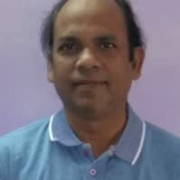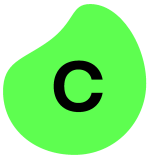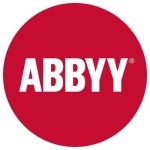We have varied use cases and have worked in different business areas. Customer service is one of our biggest business areas, along with investments and finance. We also have some risk compliance, legal, and HR use cases involving about 50 different applications.
Automation Anywhere has freed people's time and effort to do more useful things. Some smaller teams have a lot to work on during the holidays. The solution has improved error reduction and work-life balance. It was all the more useful during COVID-19 when we worked from home for four years. RPA was a godsend. People could do things more easily. We continue to grow our program through this year because of the benefits it provides.
We really like all the features of the solution. The solution's most valuable feature is its ease of use. In 2018, we assessed four different products available on the market. We chose Automation Anywhere because it seemed to be the easiest and most intuitive to use for non-technical people. That has always been our model. We are a very citizen developer-focused organization in terms of RPA and intelligent automation.
The integration of Automation Anywhere with our business applications is excellent. We haven't yet encountered an application with which it doesn't integrate. That's the point of Automation Anywhere or RPA. You use the applications as is. It sits as a bridge or a layer on top of your existing application and does a fabulous job.
We have integrated very few use cases into our workflow. We hope to do that a bit more with attended automation and Copilot. We have no complaints so far regarding documents, but we hope to do a little more with that. From what I've heard, you have a lot more API integrations available now than before. We would like to assess them and use them.
Automation Anywhere has definitely improved work-life balance and error reduction. Our audit and compliance team regularly advocates for the RPA team. They reach out to different business areas when they're auditing them. They are absolutely one of our biggest advocates. We have seen an overall improvement in employee morale with the various benefits we have gotten apart from the obvious time-saving.
The biggest metric that we use is annualized automated hours. I think we have saved about 50,000 annualized hours. In addition, we have saved another 50,000 hours for automated monitoring where people aren't needed. It has saved us a lot of time.
Automation Anywhere is excellent at providing automation at scale.
Through my sessions yesterday, I'm absolutely very interested in the benchmarking process that comes as a part of the Pathfinder program. We are also hoping to use Copilot very, very soon.
We haven't used Professional Service Accelerators yet because of how our program is structured. We started five years ago. We do everything in-house, including training and development. Our citizen developer program is quite robust. We have been able to do all our migrations and development ourselves.
My favorite aspect of the Imagine event is connecting with many different people. I've been coming to the Imagine event since 2019. Every time I come here, listening to all the keynote speakers on the first day makes me realize that the world is moving at such a fast pace, and we are so behind.
You meet people and realize that these are all possibilities and opportunities for us to be a part of this revolution. It's amazing, and it always feels great to come to the Imagine event.
The most important part of the Imagine event is the people. We have worked with Automation Anywhere all the time. We have worked with excellent people, whether it's the customer success team, the accounts team, or all the leaders at Automation Anywhere. It is wonderful to meet all of these people and hear and see what their vision is and what their thoughts are.
The highlight of every Imagine event is all the products and services that are coming in the near future that we could use or leverage. It's really exciting. It's just me this time, but we usually have more people at Imagine. People are generally very excited to come and be part of it.
With Automation Anywhere or RPA, the way we automate things now is different from traditional automation. The focus of our organization has been to help nontechnical business people automate their own processes. It makes it so much easier for them to learn to automate their own work as opposed to traditional automation, which was mainly done by IT.
It is extremely easy for business users who do not have technical skills to use Automation Anywhere. We use the Automation Anywhere training. We train our own citizen developers within the organization, but the training program is based on what Automation Anywhere provided us at the beginning.
While we have to teach business users how to use basic technical things, we also have to teach technical people how to approach business and business processes. That's a part of our training program. Apart from that, it's very intuitive and straightforward. It's equivalent to a six-month-old who can operate an iPhone.
We take our cues for the solution's learning curve from the Automation Anywhere initial training. We think it takes about six weeks for people to learn to use Automation Anywhere effectively, and we build that into our training program. We cover the basics in week one. We take a use case and work with that in week two. People continue working on their use cases in the third, fourth, and fifth weeks.
In week six, we target to put the use cases into production and cover more advanced topics. We have continued collaboration with our developers to learn new skills. I think six weeks is the amount of time needed for people to be comfortable using the tool on their own for their own use cases.
On our platform, we have about 50 other applications integrated with Automation Anywhere. We have expanded our program from RPA to intelligent automation. Intelligent document processing, Alteryx, Power Automate, and Automation Anywhere actually work hand in hand. While Automation Anywhere is still our main automation orchestration program, we integrate these other automating applications along with it.
I could personally use automated testing, which we currently do not have in Automation Anywhere. When we looked at the document processing IQ Bot, it didn't work for our documents. Since I haven't looked at it recently, I don't know if it needs improvement now. I'm sure the current version is much better.
We started using Automation Anywhere at the end of 2018, so, it's been five years and counting.
We have no complaints about the solution's technical support. I rate the entire customer success team a solid 11 out of 10. That's my comparison scale. Over the last five years, we have had five customer success managers, and all of them have been excellent. They had different personalities and different ways of working, but all of them were excellent. The last four are personal friends now.
We started seeing a return on investment after the first year and a half of using Automation Anywhere. The growth has been a little bit slow but steady during the time we were all working from home, but I'm hoping for it to grow again over the next 12 months. We'll probably have bigger and better stories to share at the next Imagine event.
I think the solution's pricing is reasonable. Setup cost is what you expect in the industry so far, and the licensing is at par. However, I like the ease of licensing and the flexibility in scaling up or down. We have done that over the last few years. I am looking forward to moving to the cloud between now and the end of August. That will change the licensing model a little bit.
We do not have Dev Stage licenses. From what I understand, it's going to be a pool that we pull out of. It'll be different, but I think it'll give us more flexibility.
We did not use a different RPA solution before using this. We assessed four different products, starting at the end of 2017 through 2018, and realized that Automation Anywhere is the best fit for us. We still think the same because it works great, and we have no reason to complain. We haven't had the need for any other product just yet.
For our current setup, Automation Anywhere is set up on a private cloud on-premises. However, we are working to move to the Automation Anywhere cloud. We are assessing and going through the initial steps. We hope to be on the Automation Anywhere cloud by the end of this year.
Overall, I rate the solution ten out of ten.























